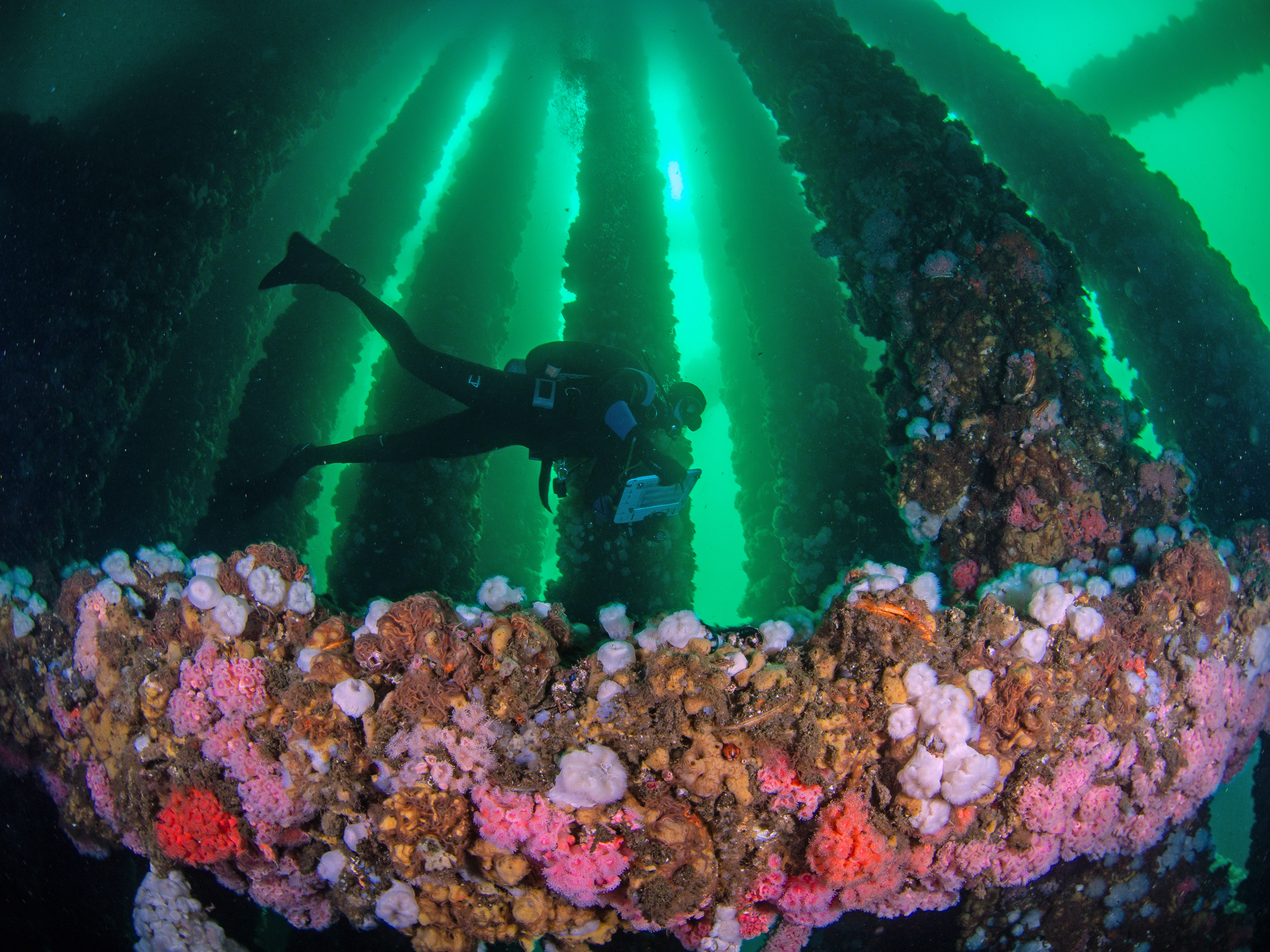Sea Life Finds a Way Among Old Oil Platforms’ ‘Jacket Complexity’
UC Santa Barbara Marine Biologists Share Findings in ‘Bulletin of Marine Science’

About the time California reported its first case of novel coronavirus in late January, a Bulletin of Marine Science arrived in the mail that examined life below offshore oil platforms. Containing 11 papers led by UC Santa Barbara researchers of marine biology, the Bulletin provides a guide of sorts, said UCSB professor Milton Love, for the decommissioning of the platforms in terms of understanding the potential effects on sea life. The 27 platforms off California’s coast will reach the end of their useful fossil-fuel-sucking lives within the coming years, but since the 1960s, when the first ones were sunk, they’ve been found to make excellent fish nurseries.
Love, who has swum with the fishes for more than 40 years, and his colleague, researcher Ann Scarborough Bull, received a $400,000 grant from the U.S. Bureau of Ocean Energy Management for the endeavor, persuaded the Bulletin to publish it, and gathered 20 specialists from UCSB, CalState Long Beach, CalPoly Pomona, California Fish & Wildlife, and the Bureau of Ocean Energy Management to look with great detail at the adults, larvae, fry, and fingerlings living among the various levels of the platforms, in waters as deep as 700 and 1,200 feet in place. They used a submersible for those studies, Love said.
The scientists examined the structures of the platforms, finding that most sea life preferred the crevices and crannies of the supports — or “jacket complexity” — as opposed to more bare platform legs, depending on the age and size of the sea creatures. Dozens of different types of rockfish were among many of the fish found, according to the study, which was published last October.
Invertebrates like mussels, sponges, anemones, and cold-water corals are part of the platform ecosystems, explained Mark Page of UCSB’s Marine Science Institute, that sometimes differ in relative abundance across geographic locations — the platforms stretch from Long Beach to Point Arguello. In marine biological terms, their presence creates habitat and provides food for fish and larger invertebrates such as crabs.
Another structure, heaps of shell middens, form below the rigs from the mussels and barnacles that festoon and become dislodged from the upper 30-40 feet. If the supports were left in place as a manmade reef, the upper section would likely be removed. Based on studies of the seven platforms decommissioned between 1974 and 1996 — Harry, Helen, Herman, Hazel, Heidi, Hope, and Hilda — the shell middens offer food and homes to sea stars, crabs, mollusks, and larger predators. The heaps also hampered halibut and sea cucumber fishing and harbored toxins, so their retention or removal presents a mixed bag.
Whether and how to remove or retain platforms is an ongoing discussion in California, where seven shutdowns are ongoing: Platform Holly and Piers 421 in California waters, and Gail, Grace, Hidalgo, Harvest, and Hermosa in federal. In their five decades as unintended manmade reefs — the first was Signal Oil’s Platform Emmy off Huntington Beach in 1963 — the platforms have become home to millions of sea creatures and a nursery to schools of fish along California’s coast.



